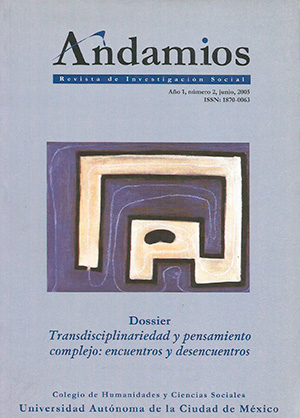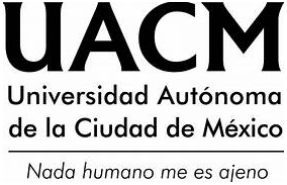SEMIÓTICA Y ACCIÓN COMUNICATIVA: UNA RUTA ENTRE PIERCE, APEL Y HABERMAS
DOI:
https://doi.org/10.29092/uacm.v0i2.498Keywords:
lenguaje, acción comunicativa, comunidad de comunicación, pragmática, semióticaAbstract
El propósito de este artículo es dar un vistazo al planteamiento de la semiótica peirceana y su relación fundamental con la comunidad de comunicación de Apel y la acción comunicativa de Habermas. La idea de una sociedad comunicada, constructora de consensos y democrática tiene su fundamentación en teorías del lenguaje y la pragmática, es por ello importante regresar a sus fuentes y tratar de encontrar en las preguntas de estos autores, algunas luces para el ejercicio de la interlocución social.
Downloads
References
APEL, Karl-Otto (1985), “El a priori de la comunidad de comunicación y los fundamentos de la ética” en La transformación de la filosofía, vol. II. Madrid: Taurus, pp. 341-413.
_____ “Intersubjetividad, lenguaje y autorreferencia”. Artículo en línea disponible en . [Consulta: 28 de noviembre, 2001].
DELADALLE, Gérard (1996), Leer a Peirce hoy. Barcelona: Gedisa.
HABERMAS, Jürgen (1985), “Ética del discurso. Notas sobre un programa de fundamentación” en Conciencia moral y acción comunicativa. Barcelona: Península, pp. 57-134.
_____ (1989), Teoría de la acción comunicativa I. Buenos Aires: Taurus.
PEIRCE, Charles Sanders (1988), El hombre, un signo: el pragmatismo de Peirce. Barcelona: Editorial Crítica.
RODRÍGUEZ DE RIVERA, José (2001), Pragmática transcendental (K. O. Apel) y Universal (J. Habermas). Artículo en línea disponible en . [Consulta: 28 denoviembre, 2001].
SAUSSURE, Ferdinad de (1996), Curso de lingüística general. Madrid: Fontamara.
Published
Issue
Section
License
This Journal is licensed under Creative Commons Mexico 2.5. It is allowed to reproduce and disseminate the contents of the Journal for educational or research purposes, not for profit, as long as they are not mutilated and cite the source (Andamios, Revista de Investigación Social) and the author.
The copyright of the articles published in Andamios, Revista de Investigación Social are transferred by the author(s) to Universidad Autónoma de la Ciudad de México when the originals have been accepted, so that they are published and distributed both in the printed and electronic versions of the Journal. However, as established by law, the author(s) retains their moral rights. The author(s) will receive a form of assignment of copyright that they must to sign when their original has been accepted. In the case of collective articles, the signature of one of the authors will suffice, provided that the latter has obtained the consent of the others.
Authors may use the material of their article in other works or books published by themselves, with the condition of quoting Andamios as the original source of the texts.
The articles contained in this publication are the responsibility of their authors and do not compromise the official position of Andamios, Revista de Investigación Social of the Universidad Autónoma de la Ciudad de México.


